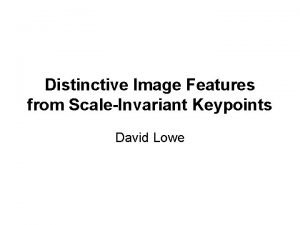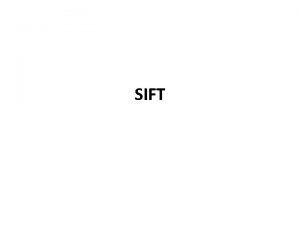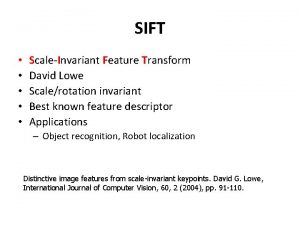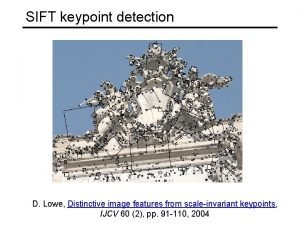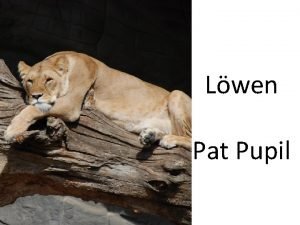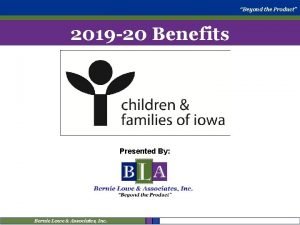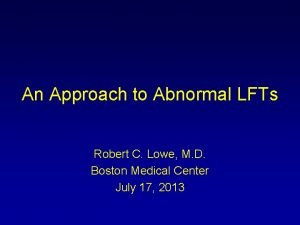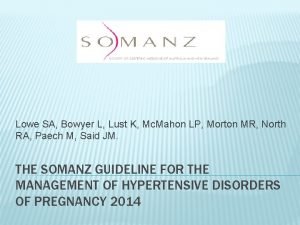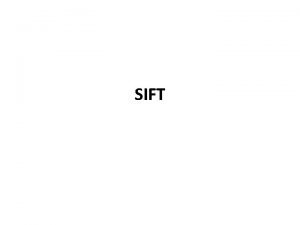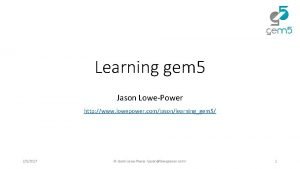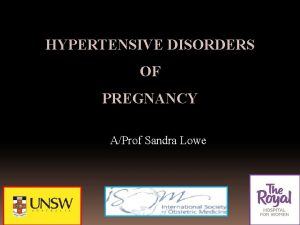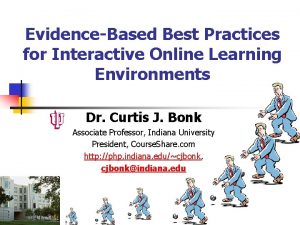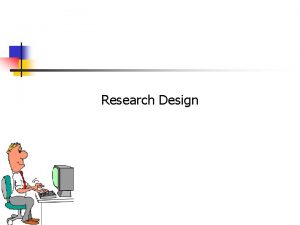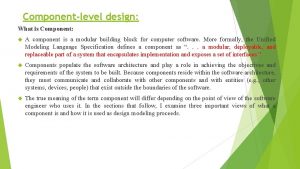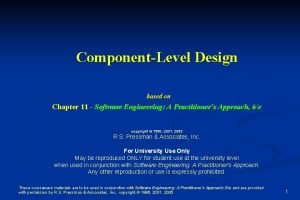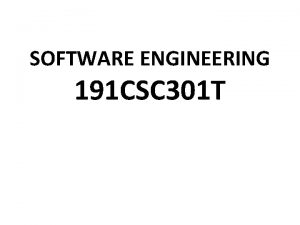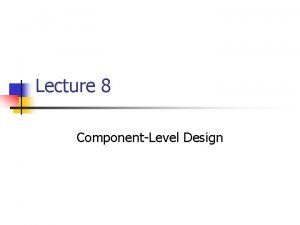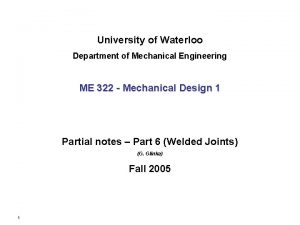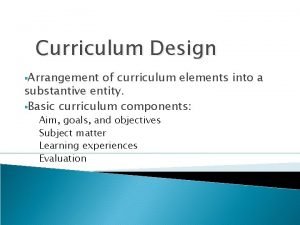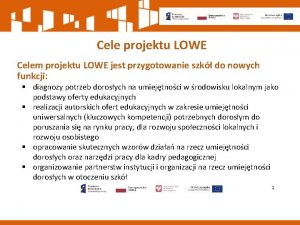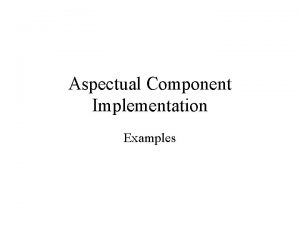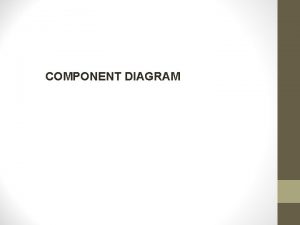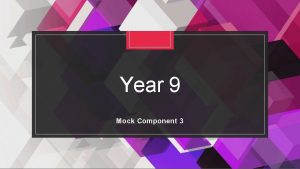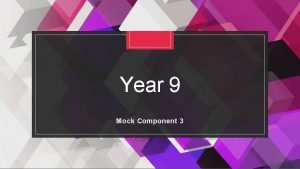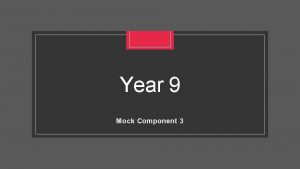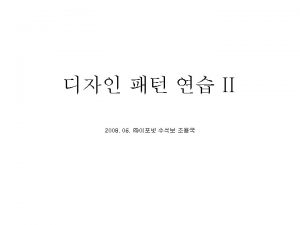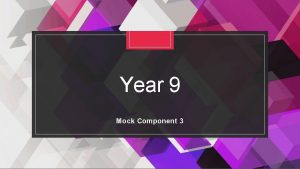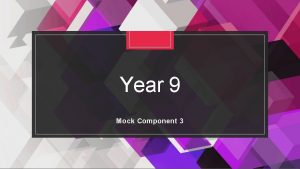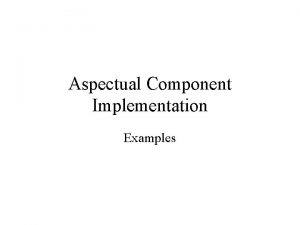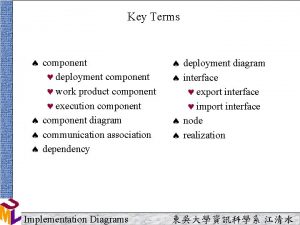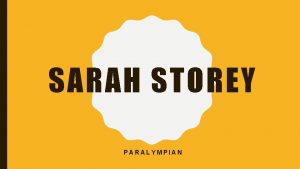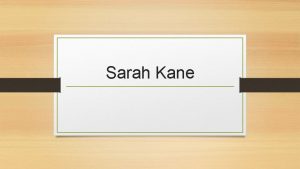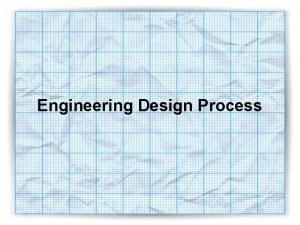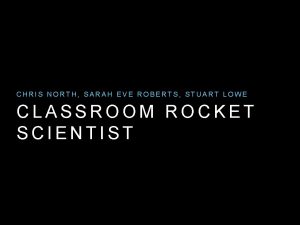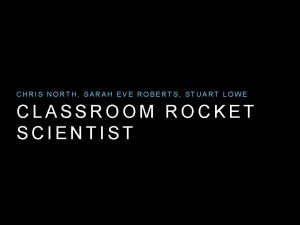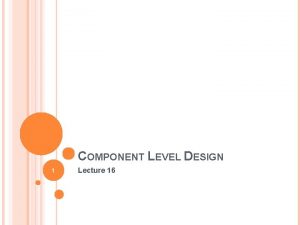Status Trends Component The Design Process Sarah Lowe




































- Slides: 36

Status & Trends Component The Design Process Sarah Lowe, Bruce Thompson, Rainer Hoenicke, Jon Leatherbarrow, Robert Smith, Don Stevens, Cristina Grosso, and the DIWG

Design Process Review and evaluate the hydrographic regions Determine the number of samples per hydrographic region Develop an optimum sampling design to address the new RMP objectives Select the sampling locations

Review and Evaluate the Hydrographic Regions Evaluating the existing segmentation scheme Soliciting the professional opinions Performing our own analyses

Existing Segments

Professional Opinions

Cluster Analysis Results Temperature salinity DO DOC TSS p. H Graphical Analysis Results Temperature salinity Water Quality data source: RMP and BPTCP (1989 -1998)

Cluster Analysis Results % Fine sediment TOC Graphical Analysis Results % Fine sediment TOC Sediment Quality data source: RMP, BPTCP & DWR (1991 -1998)

Expert Opinion Water Cluster 5 Water Graphical 1 1 Sediment Graphical 0

The New Segmentati on Scheme has Six Main Hydrograp hic Regions Rivers

We determined the final number of samples per region based on: Statistical power analyses for key contaminants when compared to specific guidelines Regional Board priorities Funding

Key contaminants were compared to specific guidelines Water: compared dissolved copper to the CA Toxics Rule – WQC Sediment: compared copper, mercury and total PAHs to the Effects Range Low guidelines - ERL (Long et al. 1995)

Dissolved Copper WQC : saltwater = 3. 1, freshwater = 9 (µg/L) Type I error rate (a) = 0. 05. Dry Season: May-Oct.

Sediment samples compared to the ERL guidelines. Type I error rate (a) = 0. 05.

Numb er of S A M P L E S Suisun San Pablo Bay W=4 S=8 l l l W=4 S=8 l Central Bay Rivers ll ll Water: 33 total Sediment: 49 total South W=10 Bay S=8 l W=6 S=8 Lower South l Bay ll ll

Sampling Plan Annual sampling (during the dry season) Measure priority pollutants & ancillary measures effects (toxicity) bivalve bioaccumulation

W A T E R Wat 1

W A T E R 5 Fixed historical stations





S E D I M E N T Sed 1

S E D I M E N T 9 Fixed historical stations Sed 1 new

S E D I M E N T Sed 1 w/arrows





S E D I M E N T 1 to 6




Sed 1 -10

S E D I M E N T 1 to 11

S E D I M E N T

• Defined the major hydrographic regions using a weight-of-evidence approach • Used statistical analyses and management needs to determine best sample size per region • Developed a random sampling design with good spatial coverage
 David lowe sift
David lowe sift Sift lowe
Sift lowe Scale invariant feature transform
Scale invariant feature transform Sift keypoint detector
Sift keypoint detector Löwe lateinischer name
Löwe lateinischer name Bernie lowe and associates
Bernie lowe and associates Dr robert lowe
Dr robert lowe Procare citrus floor cleaner lowe's
Procare citrus floor cleaner lowe's Susan suchting lowe
Susan suchting lowe Sift lowe
Sift lowe Jason lowe-power
Jason lowe-power Superimposed preeclampsia
Superimposed preeclampsia Lowe's company mission statement
Lowe's company mission statement Gilly salmon 5 stage model
Gilly salmon 5 stage model Conclusive research design
Conclusive research design Component-level design
Component-level design Component-level design
Component-level design Component level design
Component level design Component-level design example
Component-level design example Component design
Component design The arrangement of the elements of curriculum is
The arrangement of the elements of curriculum is Split range
Split range Hình ảnh bộ gõ cơ thể búng tay
Hình ảnh bộ gõ cơ thể búng tay Frameset trong html5
Frameset trong html5 Bổ thể
Bổ thể Tỉ lệ cơ thể trẻ em
Tỉ lệ cơ thể trẻ em Gấu đi như thế nào
Gấu đi như thế nào Tư thế worm breton
Tư thế worm breton Hát lên người ơi
Hát lên người ơi Các môn thể thao bắt đầu bằng tiếng bóng
Các môn thể thao bắt đầu bằng tiếng bóng Thế nào là hệ số cao nhất
Thế nào là hệ số cao nhất Các châu lục và đại dương trên thế giới
Các châu lục và đại dương trên thế giới Công thức tính độ biến thiên đông lượng
Công thức tính độ biến thiên đông lượng Trời xanh đây là của chúng ta thể thơ
Trời xanh đây là của chúng ta thể thơ Mật thư tọa độ 5x5
Mật thư tọa độ 5x5 Làm thế nào để 102-1=99
Làm thế nào để 102-1=99 Phản ứng thế ankan
Phản ứng thế ankan
